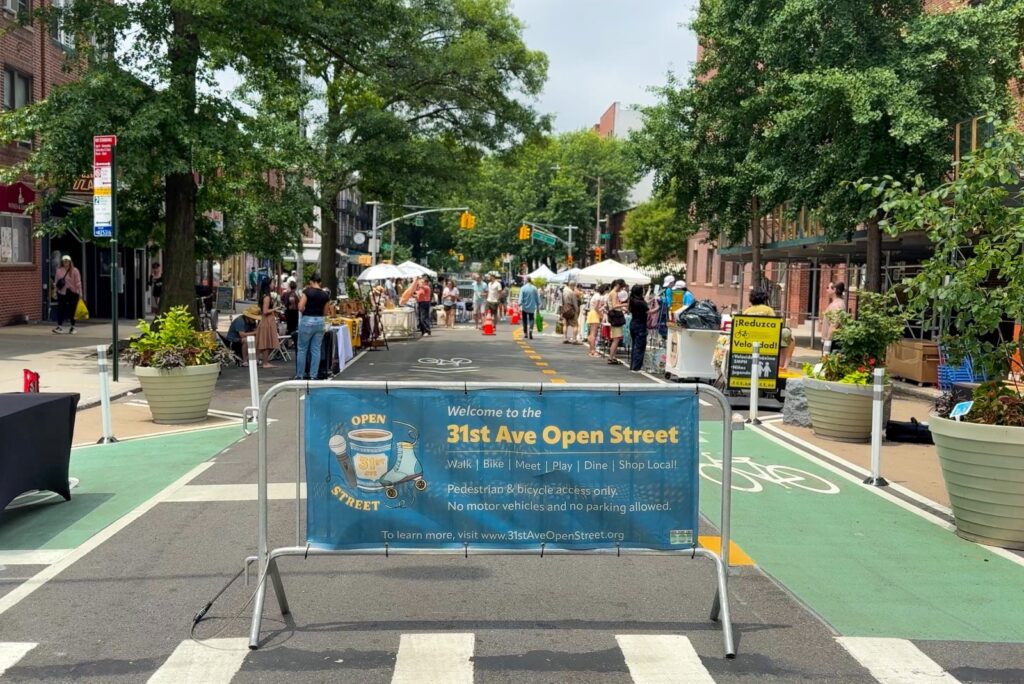Astoria’s 31st Avenue Transformed into Vibrant Bike Boulevard

The New York City Department of Transportation (NYC DOT) has completed a landmark transformation of 31st Avenue in Astoria, Queens, turning the once car-dominated thoroughfare into a people-friendly Bike Boulevard designed to enhance safety, connectivity, and access for pedestrians and cyclists alike.
Announced by NYC DOT Commissioner Ydanis Rodriguez, the project marks a significant step in the city’s broader effort to reimagine how public streets are used. The redesigned 31st Avenue now features a shared-street layout that gives priority to non-vehicular movement, reflecting the neighborhood’s travel habits. where more than half of daily trips are made on foot and over a third by bicycle.
At the heart of the redesign is a newly installed two-way protected bike lane that stretches from Vernon Boulevard to Steinway Street. This critical east-west cycling connection now links directly with existing bike infrastructure in the area and extends to the Queensboro Bridge, where pedestrian and cyclist space was recently expanded. This new corridor offers a safer, more continuous route for the growing number of New Yorkers choosing to cycle.
To further protect all street users, the DOT implemented several intersection upgrades, including traffic diversions that reverse one-way vehicle flow to discourage speeding and reduce through-traffic. Meanwhile, sidewalk extensions painted onto the pavement have been used to narrow crossing distances, making intersections safer and easier to navigate. Granite blocks and planters have been placed strategically throughout the avenue to increase visibility, serve as protective barriers, and offer informal seating for pedestrians.
The improvements don’t stop with infrastructure alone. The DOT also introduced smaller, eye-level traffic signals specifically designed for cyclists, helping ensure that they receive clear guidance before entering intersections. where many crashes tend to occur. Additional flashing yield signs and stop signs placed along the route are expected to encourage greater caution and compliance among all road users.

A key aspect of the transformation has been its integration with the 31st Avenue Open Street program. In partnership with the 31st Avenue Open Streets Collective and The Horticultural Society of New York, the DOT reimagined a two-block stretch of the avenue between 33rd and 35th Streets. This area has been designed to transition smoothly from weekday traffic to weekend pedestrian-only use, supporting a variety of community activities including markets, performances, and local vendor events. The granite blocks not only serve as protective elements but also function as seating, encouraging gathering and community interaction.
Commissioner Rodriguez emphasized that the 31st Avenue Bike Boulevard is more than a traffic project. It’s a vision for the future of New York’s streets. “This redesign shows how we can rethink public space to meet the needs of today’s New Yorkers. It supports sustainability, safety, and community,” he said.
As New York City continues to expand its network of protected bike lanes and pedestrian-friendly zones, the transformation of 31st Avenue stands as a model of what inclusive, multimodal urban design can look like. Balancing mobility, safety, and community well-being in one bold initiative.






